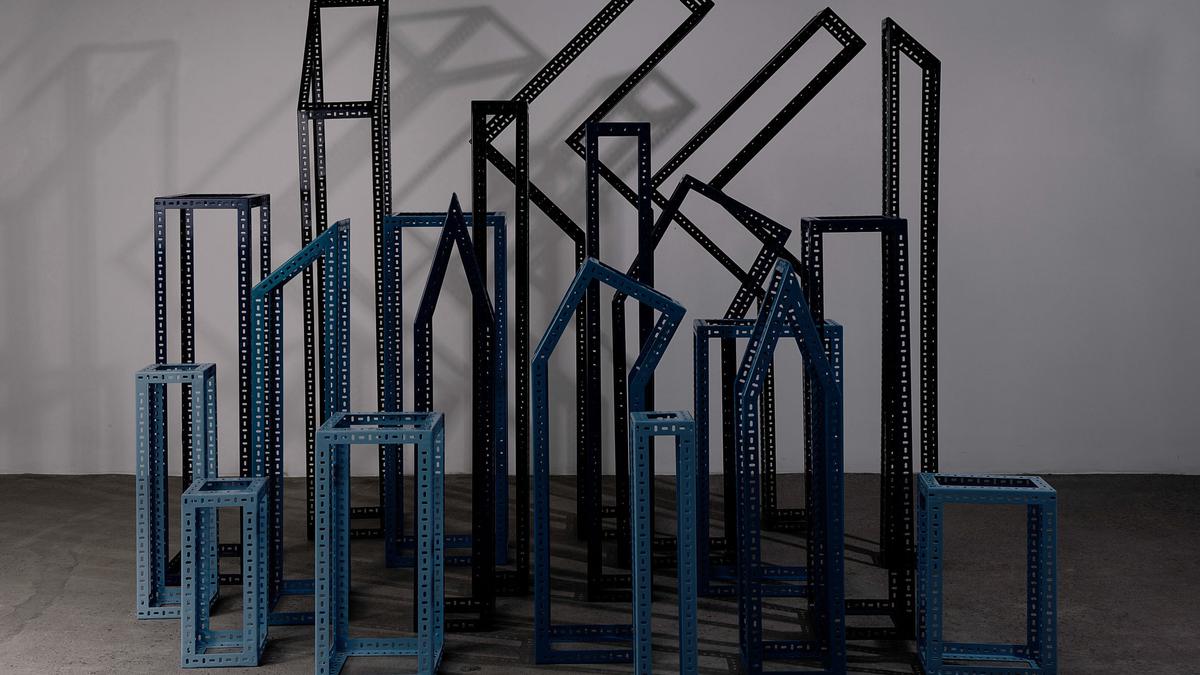
Madras Day | Look through art made in Madras over the last 200 years at this Chennai exhibition
The Hindu
Enmeshing history and aesthetics, a survey of art that originated in Madras over the last 200 years is on display at Chennai’s Raw Mango
A well-detailed watercolor portrait of an officer of the Madras Light Cavalry Regiment (1850), dressed in an open and turn stable jacket and a silver-red waistcoat, by a Eurasian of British-Portuguese descent, Simon Fonceca, now finds place at an Art Deco house that typically houses designer sarees. He introduced himself as a “portrait painter based at 123 Armenia Street, Madras.”
“Fonceca was interestingly a native artist, possibly born and raised here. He gave us a visual reference of Madras at the time, like many others from the early 1800s, to mid 1800s,” begins Ashvin Rajagopalan of Ashvita’s, curator of The History of Form & Physicality, currently on display at Raw Mango.
With portraits, photography, pottery and contemporary sculptures, the display is simply a survey of arts and craft in Madras spanning the last two centuries. “When we say Madras, it extends to Madras Presidency, which extends to the South towards Thanjavur and Madurai,” clarifies Ashvin. The gallery has lately been focussing on the extremely vast narrative that the Madras arts and craft movement has had, by looking at the timeline from the 18th to 21st Century.
While Fonceca’s portraits capture the people of colonial Madras, a golu doll of a sadir aatam dancer from the 1850s dipped in soothing earthy tones, that still remains intact, highlights early perspective towards the human figure. “Then, we move on to looking at the photographic history of Madras with three photographs from the 1910s and ‘20s. They talk about the studio art culture that the city had,” says Ashvin. Photography arrived in Madras early, in the 1850s. It was seen as an approachable commercial artform, and with the proliferation of photo studios came highly skilled artists who would paint over photographs to further refine and enhance large images. M Pachappa’s Portrait of Man and Woman, and an untitled portrait of an Iyengar couple are testament to Madras’ early interaction with the medium.
Ashvin continues, “The larger body of work that we have displayed are ceramics. And we have displayed one piece of pottery, which is called a ‘magic khuja’ which was developed in a particular village called Karigiri which is near Vellore.” The ‘magic khuja’ is part of a body of work with a history.
“The story is of a cluster of potters who were active in Thanjavur and Madurai. They were typically Telugu-speaking, and were called the Raju community. They were painters, potters; the same people behind the golu bommais, and Thanjavur paintings. Sometime in the late 1700s, a group of them moved to Karigiri and started making pottery. Around the same period is when the Nawabs of Arcot came into power. They would commission work to the potter families to make these fairly elaborate and decorative pieces of pottery which had influences of both the Mughal style of design as well as the Deccanese style of design,” narrates Ashvin. As the Nawabs handed over their governance to the British, they stopped being patrons of this highly-skilled art form.
But interestingly, around the 1890s and early 1920s, the same time when Christian missions were set up in Vellore, Karigiri pottery also began to see a revival. The missionaries helped potters brush up their skills and brought them exposure by selling their wares at places like the Victoria Technical Institute on Mount Road in the 1950s.













